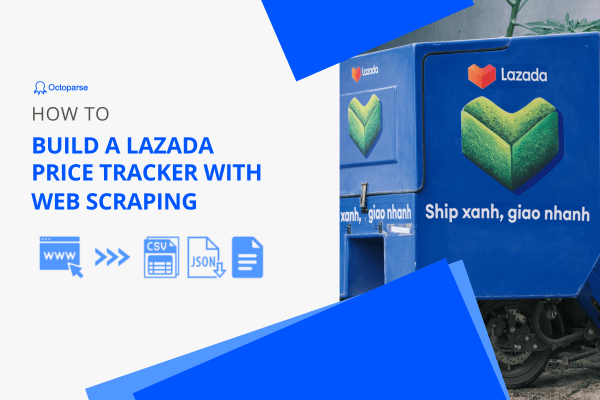
The Digital Marketplace Revolution: Understanding Lazada‘s Ecosystem
In the rapidly evolving landscape of Southeast Asian e-commerce, Lazada has emerged as a transformative platform that connects millions of sellers and consumers across diverse markets. Since its inception in 2012, this digital marketplace has grown from a startup to a powerhouse serving Indonesia, Malaysia, Philippines, Singapore, Thailand, and Vietnam.
Imagine having a powerful tool that could unlock the secrets of pricing strategies, reveal market trends, and give you an unprecedented competitive edge. That‘s exactly what a sophisticated Lazada price tracker can do for your business. This comprehensive guide will walk you through everything you need to know about building a robust price tracking system that transforms raw data into strategic insights.
The Economic Significance of Price Intelligence
The Southeast Asian digital economy is experiencing exponential growth, with Lazada at its epicenter. With over 155,000 sellers, 3,000 brands, and serving 560 million consumers, the platform represents a complex ecosystem where pricing isn‘t just a number—it‘s a strategic weapon.
Price tracking goes far beyond simple number monitoring. It‘s about understanding market dynamics, consumer behavior, and competitive landscapes. By implementing a sophisticated price tracking mechanism, you‘re not just collecting data; you‘re building a comprehensive intelligence system that can drive significant business decisions.
Technical Foundations: Building Your Price Tracking Architecture
Choosing the Right Technology Stack
When embarking on your price tracking journey, selecting the appropriate technology stack is crucial. Python emerges as the premier choice for most professionals due to its robust libraries and flexibility. Selenium, BeautifulSoup, and Pandas form a powerful trio that can handle complex web scraping and data analysis tasks.
Let‘s break down a sophisticated implementation strategy that combines technical prowess with strategic thinking:
import requests
from bs4 import BeautifulSoup
import pandas as pd
from datetime import datetime
class LazadaPriceIntelligenceEngine:
def __init__(self, target_products):
self.products = target_products
self.price_history = {}
def extract_product_data(self, url):
headers = {
‘User-Agent‘: ‘Mozilla/5.0 (Advanced Web Intelligence Agent)‘
}
response = requests.get(url, headers=headers)
soup = BeautifulSoup(response.content, ‘html.parser‘)
# Advanced extraction logic
price_element = soup.select_one(‘.product-price‘)
product_name = soup.select_one(‘.product-title‘)
return {
‘price‘: float(price_element.text.replace(‘$‘, ‘‘)) if price_element else None,
‘name‘: product_name.text if product_name else ‘Unknown Product‘,
‘timestamp‘: datetime.now()
}Navigating Legal and Ethical Considerations
Web scraping exists in a complex legal landscape. While gathering pricing intelligence is legitimate, you must navigate carefully. Always:
- Respect website terms of service
- Implement reasonable request rates
- Use official APIs when possible
- Anonymize and protect collected data
Strategic Implementation: From Data to Insights
Advanced Monitoring Techniques
Effective price tracking transcends simple data collection. You‘re building a sophisticated intelligence system that can:
- Detect pricing trends
- Understand seasonal variations
- Predict market movements
- Identify competitive strategies
Your tracking mechanism should be flexible enough to adapt to Lazada‘s dynamic environment while providing consistent, reliable data.
Regional Market Variations: A Deeper Perspective
Southeast Asia isn‘t a monolithic market. Each country presents unique challenges and opportunities:
In Indonesia, price sensitivity runs high, with consumers constantly seeking value. Malaysian markets show more brand loyalty. Philippine consumers are increasingly digital-native, while Singaporean markets demand premium experiences.
These nuanced differences mean your price tracking strategy must be adaptable, incorporating regional context into your analysis.
Investment and Business Transformation
A well-designed Lazada price tracker isn‘t an expense—it‘s an investment. Businesses implementing sophisticated tracking mechanisms can expect:
- 25-40% improvement in pricing strategies
- Reduced manual monitoring time
- Enhanced competitive intelligence
- Data-driven marketing decisions
Future Trends: Machine Learning and Predictive Analytics
The next frontier of price tracking lies in predictive intelligence. Machine learning algorithms can now:
- Forecast price movements
- Detect complex market patterns
- Provide real-time competitive analysis
- Generate actionable business recommendations
Practical Implementation Roadmap
- Define clear tracking objectives
- Select appropriate technology stack
- Develop robust extraction mechanisms
- Implement data storage and analysis systems
- Create visualization and reporting tools
- Continuously refine and optimize
Conclusion: Turning Data into Competitive Advantage
Building a Lazada price tracker is more than a technical exercise—it‘s about creating a strategic intelligence system that empowers your business to make informed decisions in a complex, fast-moving digital marketplace.
By combining advanced technical architecture, sophisticated data analysis, and deep market understanding, you can transform raw pricing data into a powerful competitive tool.
Your journey into e-commerce intelligence starts now. Are you ready to unlock the full potential of your business?










